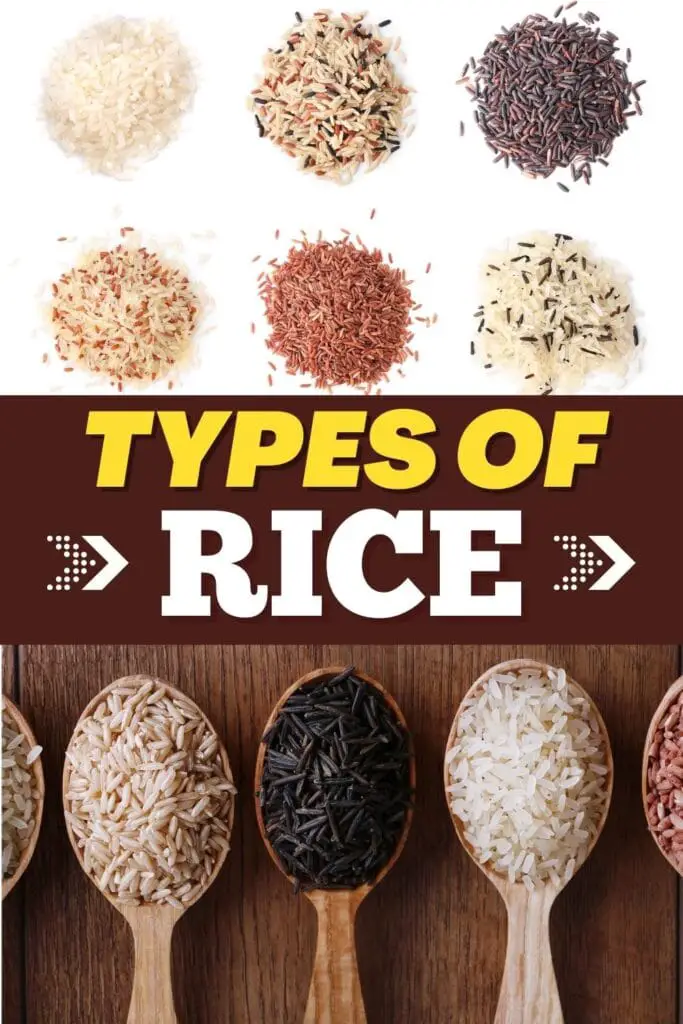
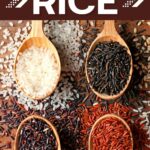


There's an entire aisle in the grocery store dedicated to everyone. types of rice.
I think it's time we talked about the top 17 and learned all about this versatile bean.
Do you want to save this blog post? Enter your email below and we'll send the article straight to your inbox!
White or brown? What about red, black or aromatic? Did you know that there were so many types of rice?
From long grain to short grain, fluffy, sticky or firm, rice comes in all colors and sizes.
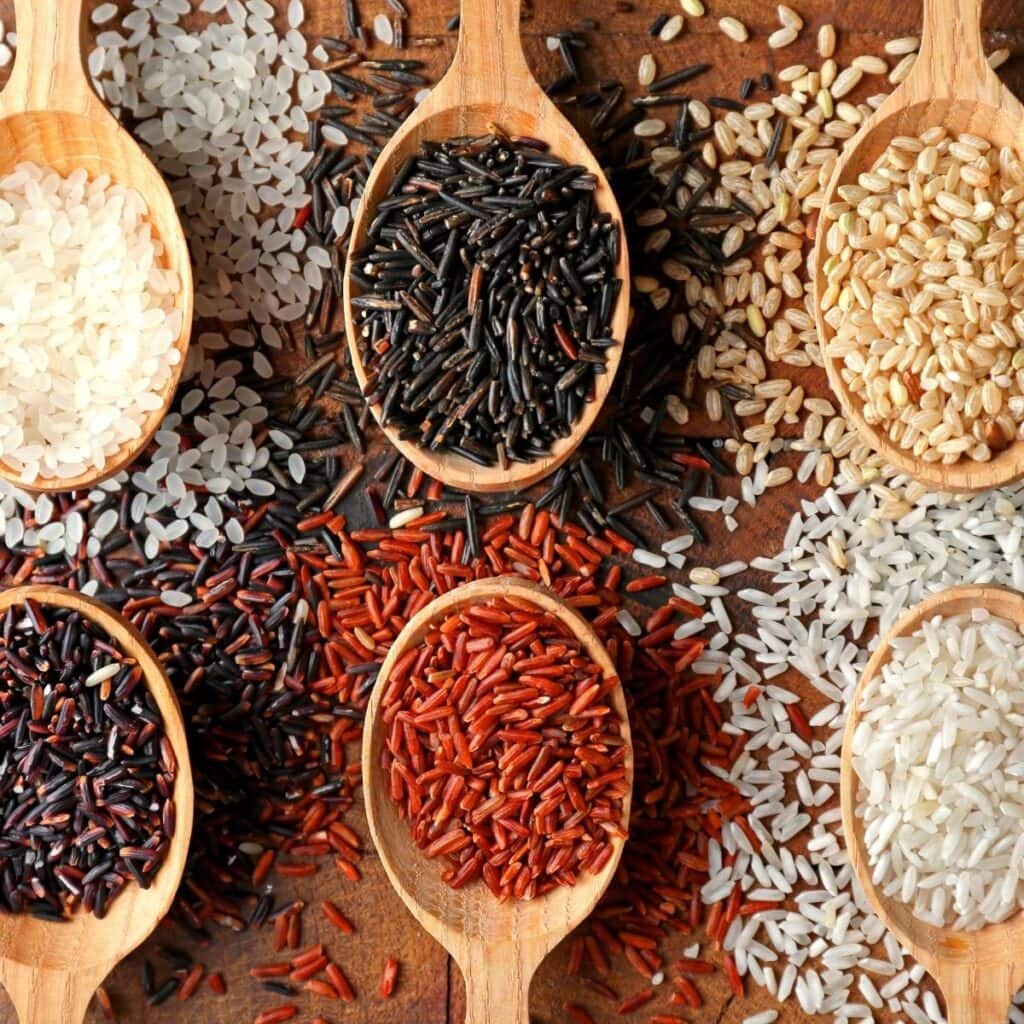
Get ready for Rice 101, so to speak.
You will have a much better understanding of how to choose the perfect rice for your next meal.
The 3 main categories of rice:
Short grain rice
Short grain rice, as the name suggests, is short and extra starchy. It sticks to itself and is often called glutinous.
It does not contain gluten, but this term comes from the fact that it is more like a glue.
The best way to eat short grain rice is with your hands or chopsticks.
It can be easily made into "cakes" by pressing them into a mold.
You may be familiar with sushi rice or sweet rice dessert. Those dishes use short grain rice.
Long grain rice
The criteria for long grain rice is that the length is at least three to five times its width.
Basmati and jasmine rice are the two most popular and well-known types of long-grain rice.
When cooked, long grain rice is fluffy and tender.
Do you want to save this blog post? Enter your email below and we'll send the article straight to your inbox!
Medium grain rice
Medium grain rice, as you may have guessed, falls somewhere between long and short.
There really isn't a clear definition. You may even find that medium grain and short grain are lumped together in the same category.
Either way, the medium grain is shorter than the long grain and longer than the short grain.
Easy, right? Medium grain rice is fluffy and creamy. Risotto and rice pudding are usually made with medium-grain rice.
17 different types of rice
There are so many different types of rice.
While you don't need to memorize or keep track of them, it's good to have a reference when cooking.
I hope this list helps you familiarize yourself with all kinds of rice.
Learn what they should be used for and what to expect from them.
When you have a few types of rice in stock, you'll be able to make whatever recipe your carb-loving heart desires. Happy rice cooking!
1.Basmati
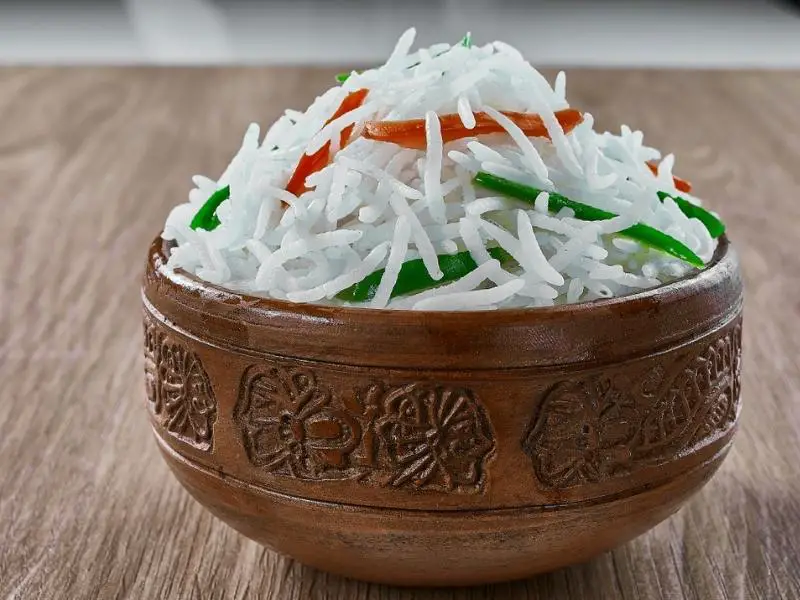
Basmati rice is one of the most popular long-grain rice varieties.
It was traditionally grown in the Himalayas and is very common in Indian and Pakistani cuisine.
Basmati rice is known to be quite fragrant rice. It also has a beautiful nut.
It is a long, thin rice that sometimes becomes even longer when cooked.
Soak basmati rice for about 30 minutes before cooking. This will reduce cooking time and preserve the flavor.
I think Basmati rice is perfect for spicy dishes like curries. It can absorb juices and sauces without becoming mushy.
2. jasmine
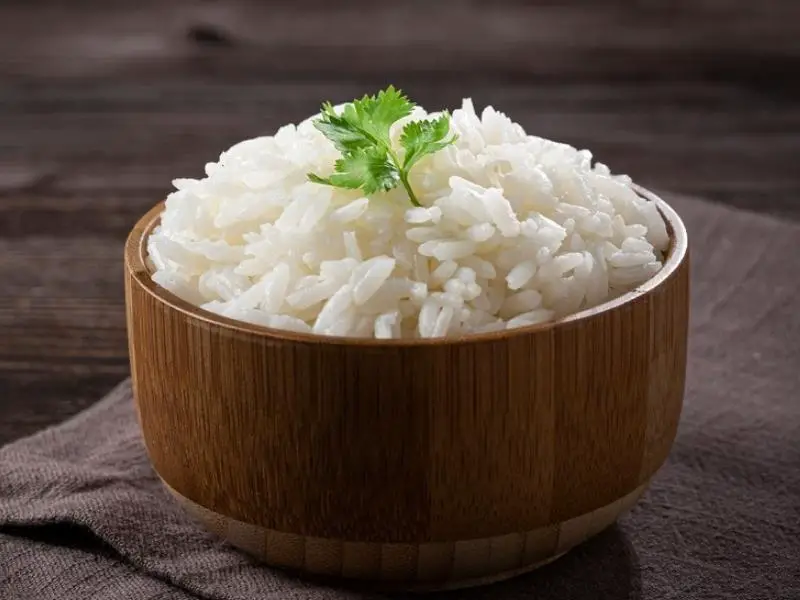
Jasmine rice is another popular long grain rice. It is very similar to Basmati but originates from Thailand.
Jasmine rice has a nutty flavor and is highly aromatic.
It is often paired with Thai food, but can be used interchangeably with Basmati rice.
Slightly shorter than basmati, jasmine rice is just as delicious and versatile.
Use this rice for fried rice dishes or with spicy entrees.
3. brown
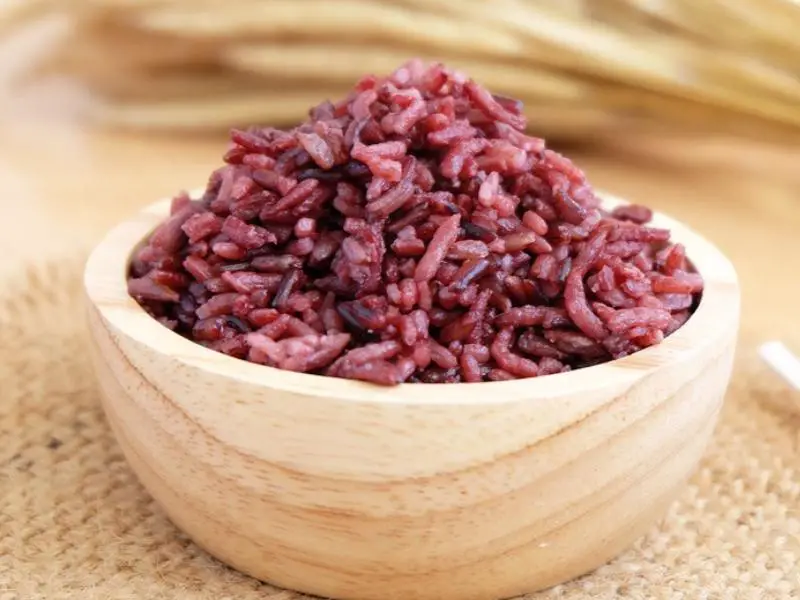
Brown rice is becoming more popular in recent years.
It can be used in place of white rice in any dish and actually has more nutrients.
Brown rice is richer in magnesium, phosphorous, potassium, and fiber.
If you're looking to add any of these minerals to your diet, brown rice is a great swap.
It is important to note that brown rice is not its own variety of rice.
It is white rice with the bran and germ still intact.
Brown rice has a lovely nutty flavor and is almost unnoticeable when used in most dishes.
4. Wild
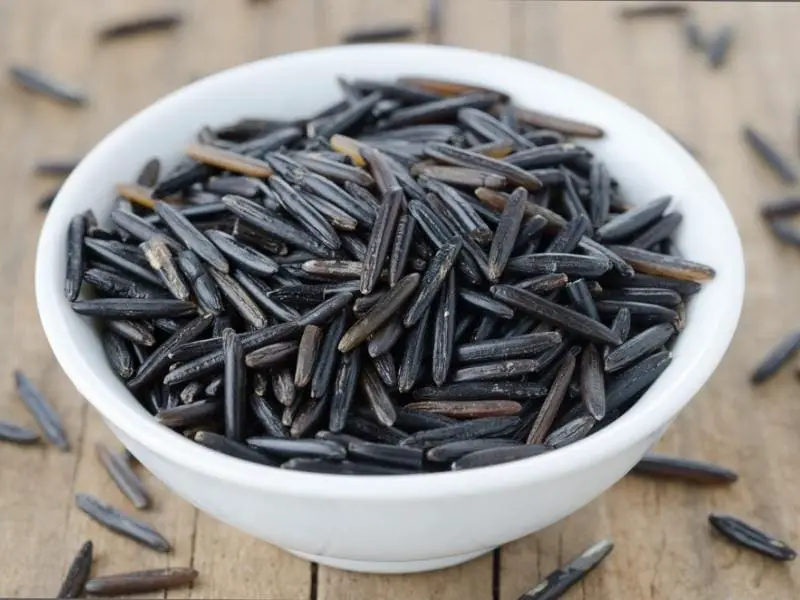
You may be surprised to know that wild rice isn't actually rice, it's grass!
It is grown in shallow lakes or slow flowing streams in the US and Canada.
Wild rice has a chewy outer shell and the inner grain is tender.
It is also a dark purple-black color that is very easy to spot among other varieties of rice.
Wild rice is ideal for soups and rice mixes.
5. black
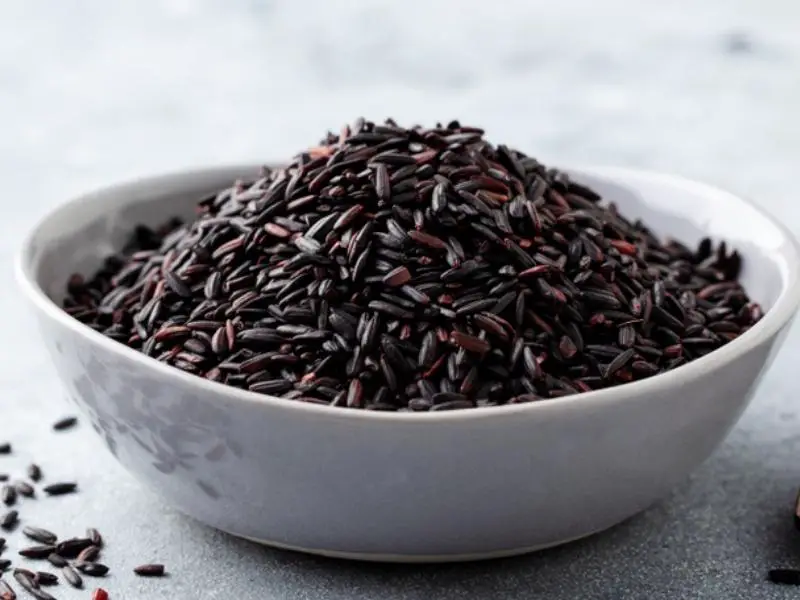
Black rice may look similar but it is very different from wild rice. Some varieties of black rice are even glutinous and sticky.
Black rice is known as "forbidden rice" and gets its color from a natural pigment called anthocyanin.
It's actually the same antioxidant found in blueberries and blackberries.
If you're looking for rice with more protein, black rice is the way to go.
This rice has more protein and iron than any other variety.
The flavor of black rice is earthy and nutty. You have to remember that black rice takes about an hour to cook.
6. sushi
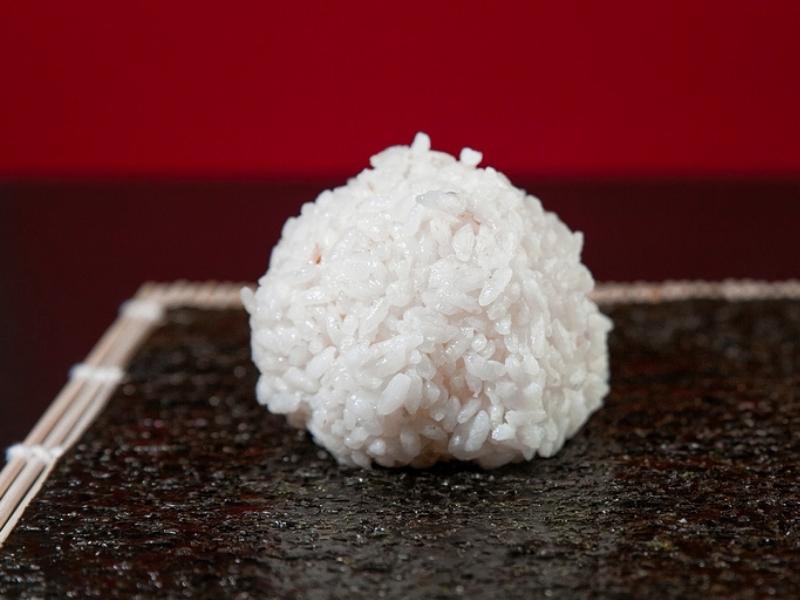
Sushi rice is a name that refers to the method of preparation rather than the rice itself.
Sushi rice is short-grain Japanese sticky rice that is seasoned with vinegar-based seasonings.
The grain itself comes in brown and white and is often slightly translucent.
It has a higher starch content, which makes it sticky.
Sushi rice is great for, well, making sushi! You can also use sushi rice for any type of savory rice cake.
It tastes especially delicious with fish and savory sauces.
7. red

Red rice is another variety of rice with a higher anthocyanin content.
This variety of rice has a red husk and can be eaten husked or partially husked.
Red rice, when eaten with the germ intact, also has the highest nutritional value of any other rice.
You can find both long grain and medium grain red rice. This rice also becomes slightly sticky when cooked.
Due to its earthy flavors, red rice is perfect for meat stews and curry dishes.
8. Glutinous (Sticky)
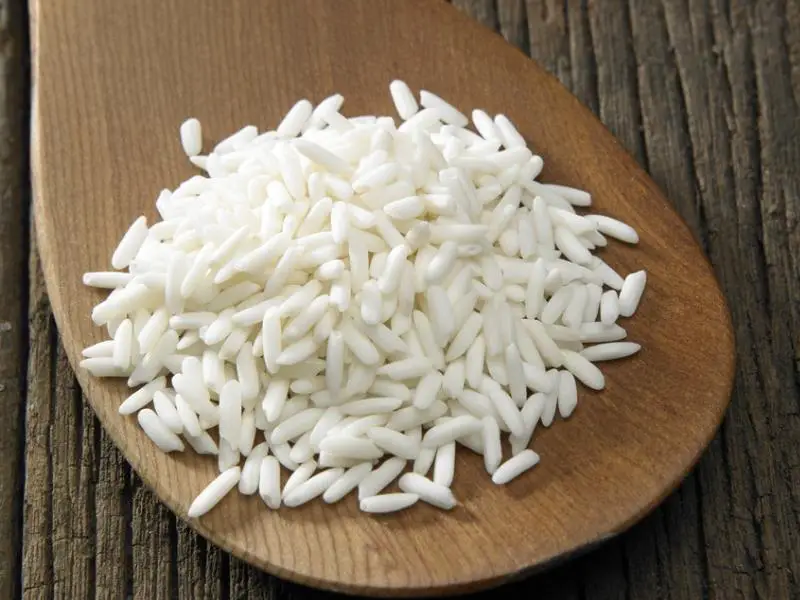
Glutinous rice is also known as sticky rice due to its extra sticky quality when cooked.
Japanese sticky rice is the most common variety and is used to make mochi.
Before cooking, glutinous rice is short, round, and opaque.
This type of rice is also very low in amylose, which makes it so sticky, chewy, and sweet.
Due to the sweetness of this rice, it is not used for savory dishes.
9. Arborio Rice
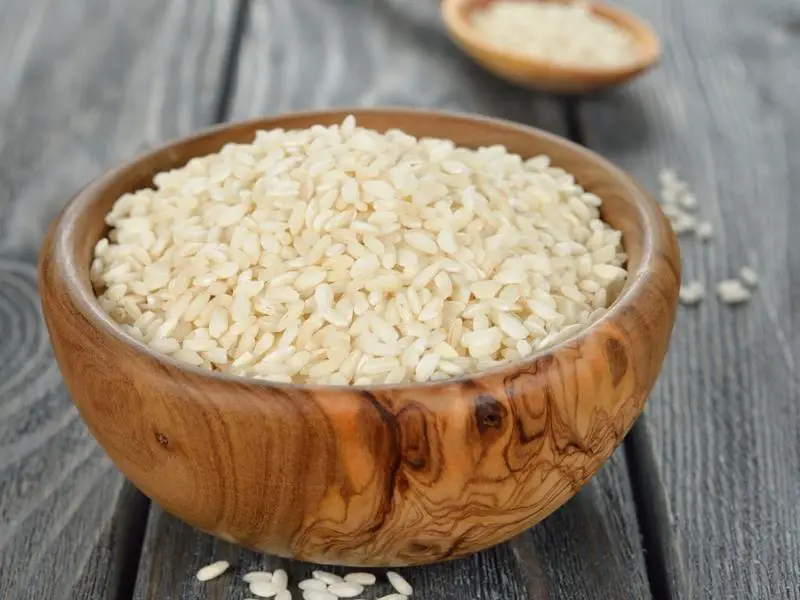
Arborio rice is a short to medium grain rice that is best known for being used to make risotto.
This type of rice is a short, plump, oval-shaped, pearly white grain.
Rice alone doesn't have much of a natural flavor, but it takes on other flavors very well.
Apart from risotto, this rice is ideal for making creamy rice pudding.
10. bomb
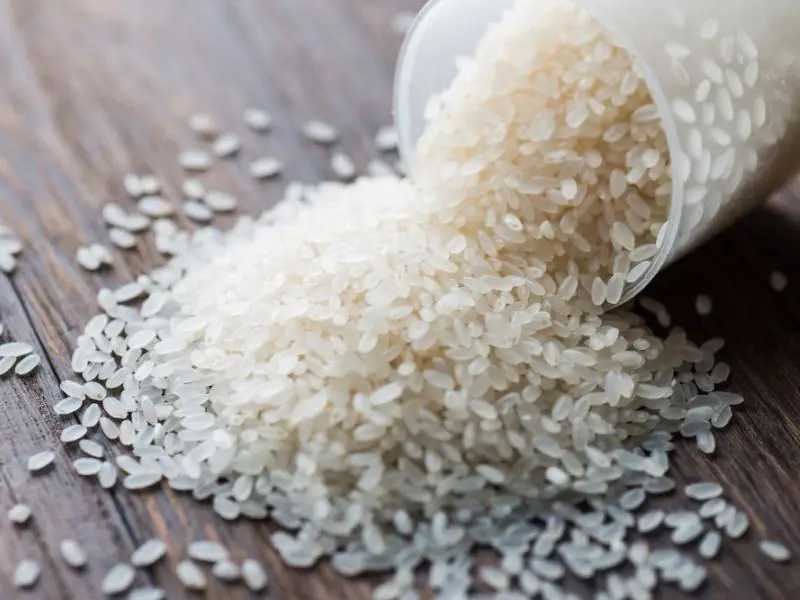
Bomba rice is known for being able to absorb a good amount of liquid without being sticky.
This grain is short and pearly white. Unlike glutinous rice, bomba rice is high in amylose, which is what prevents it from becoming sticky.
Bomba rice is also very tasty and has a rich and chewy texture. Use it for arroz con pollo or paella.
11. Valencian rice

Valencia rice gets its name from the region in which it is grown: Valencia, Spain.
Because it is local, it is also the most popular rice for making traditional paella.
This is a short grain rice that is actually quite similar to bomba rice.
If paella is not your favourite, you can also use Valencian rice to make croquettes, arroz con pollo, stuffings, or even some desserts!
12. Long grain white rice
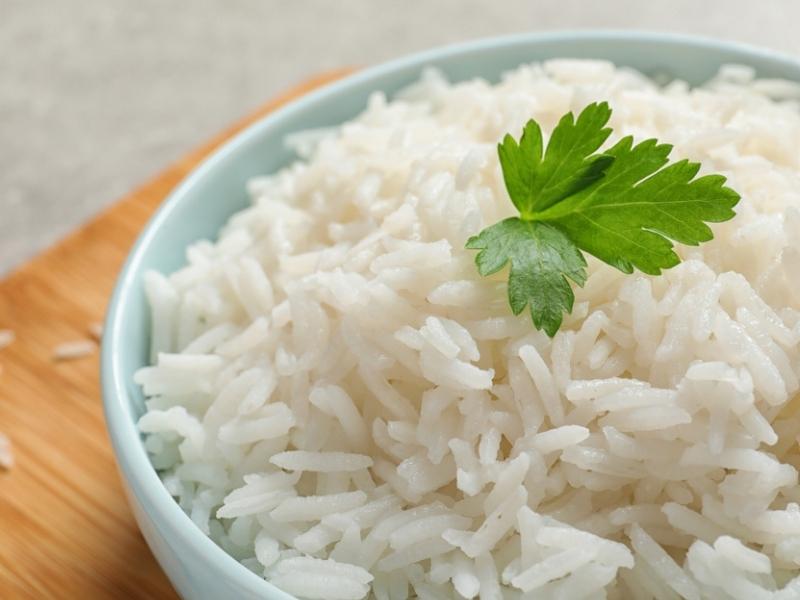
Long grain white rice is the most common and versatile type of rice.
It adapts to any type of kitchen and is delicious with all the flavors and ingredients.
White rice is fluffy and slightly sticky. It is easy and relatively quick to cook.
This rice is known all over the world and can be used for almost anything, like stir-fries or soups.
13. hot

Calrose rice originates from California and makes up 80% of the rice crops in California.
This rice is versatile and comes in whole grain and white varieties.
When cooked, it is soft, slightly sticky, and has a great flavor.
Use Calrose rice for soups or stews and even sushi.
14. Red Charge
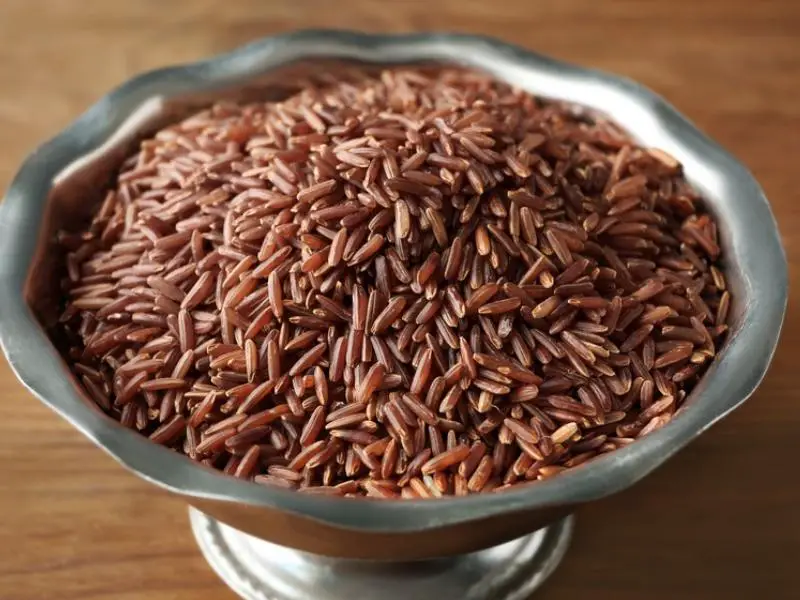
Red bulk rice, grown mainly in Thailand, is similar to brown rice.
It is a very nutritious variety of rice and the color is a brownish red.
Although it takes a little longer to cook, red cargo rice can be used for many types of dishes.
It works deliciously well with curries or other dishes with lots of herbs and spices.
15. Parboiled
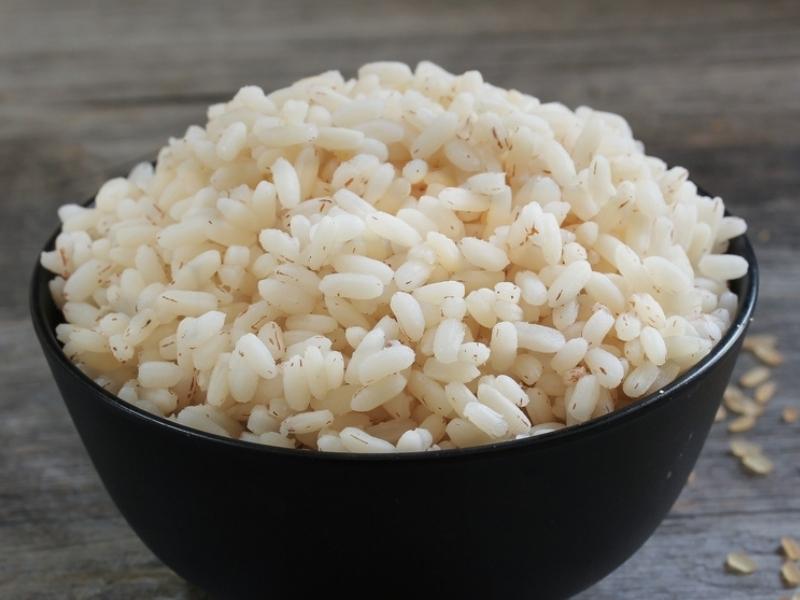
Parboiled rice is a type of rice that has been partially pre-cooked. This is done before it is processed for consumption.
This process may improve the health benefits, storage, and texture of the rice.
There are three steps to parboiling rice: soaking, steaming, and drying.
The parboiled rice ends up being slightly yellow in color and the texture is dry and firm.
16. Sona Masuri
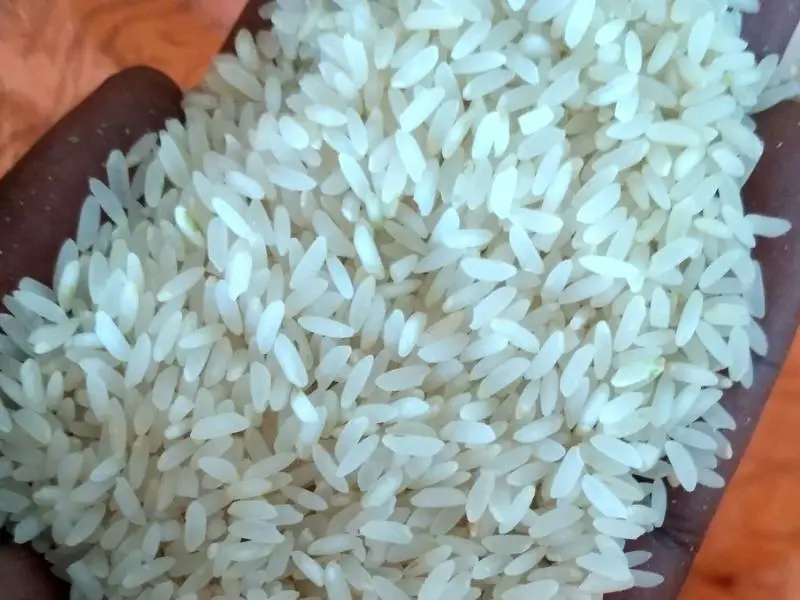
Sona Masuri is an Indian rice grown in Andhra Pradesh. It is very similar to basmati rice.
Sona Masuri is known for its weight management qualities and for being low in calories.
Because of this, it is often the preferred rice variety.
This is a slightly aromatic rice that can be very versatile.
17. Carnaroli
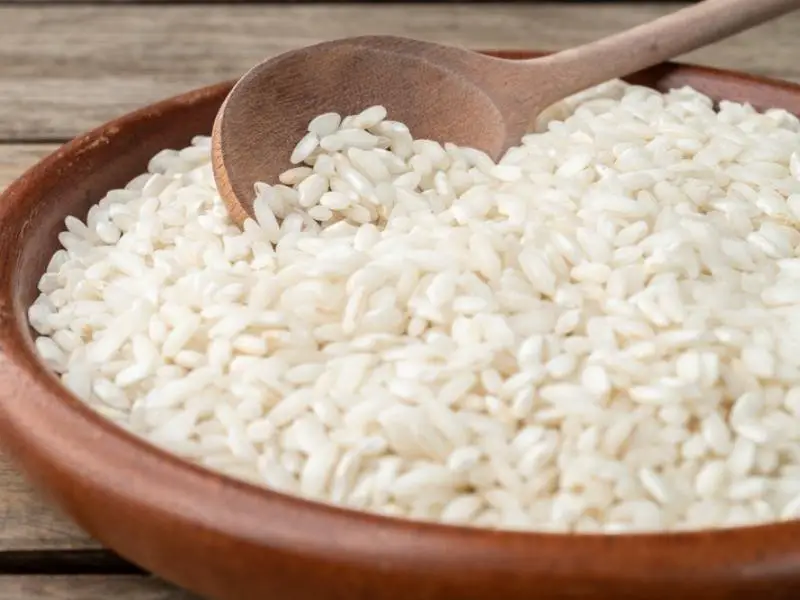
Carnaroli rice is comparable to Arborio rice. This variety is grown in the provinces of Pavia, Novara and Vercelli in northern Italy.
It is a short to medium grain rice that has a high starch content and a creamy texture when cooked.
This rice is often used to make risotto due to its firmness and delicious flavor.
